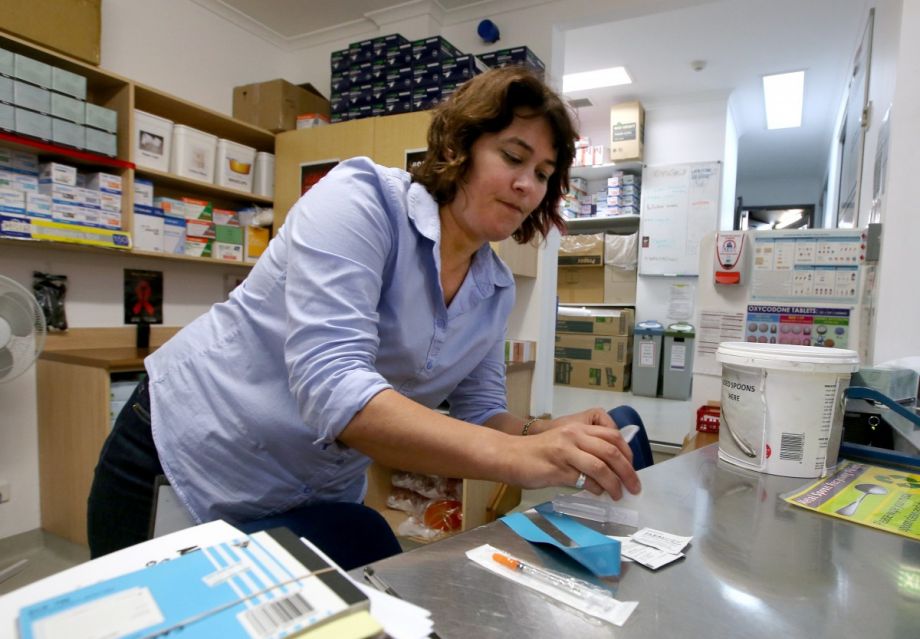Philadelphia may be among the first cities in the United States to welcome a supervised injection site for people struggling with opioid addiction.
In a press conference last week, officials announced that the city would encourage private operators to open a site in the city, where an estimated 1,200 people died of opioid overdoses last year. The announcement was a follow-up to a report from Mayor Jim Kenney’s Task Force to Combat the Opioid Epidemic in Philadelphia, released in May, which included a recommendation to explore one or more safe injection facilities, places where trained staff provide a clean and safe environment to use opioids and where staff could intervene in the case of an overdose. In November, the city sent a delegation to look into the issue in Vancouver, which has hosted a safe injection site since 2003, and Seattle, where the city council recently appropriated $1.3 million to establish one or more of their own. In a report released last alongside the announcement, officials estimated that a similar site in Philadelphia could save between 25 and 75 lives a year.
But the announcement was the easy part. The hard part will be figuring out where to put it.
In many Philadelphia neighborhoods, development of any kind generates backlash, and when it comes to social services, opposition can be especially strong. For years, the city council has grappled with how to manage methadone clinics, which treat opioid users who are in recovery. In 2013, the council approved a bill sponsored by two of its members requiring new medical offices to get zoning variances in the sponsors’ districts. Though explicitly outlawing methadone clinics is illegal, the bill was widely seen as a roundabout effort to give neighbors veto power over them. And if methadone clinics are controversial, the city can expect even greater local concerns about safe injection sites.
“While we don’t have a site in mind, it would have to be a site where people who are using are already in proximity,” says Eva Gladstein, the city’s deputy managing director for Health and Human Services. “And then we would want to have pretty extensive wraparound services. So the ability to co-locate other supports next door or nearby would be important to us.” Co-located supports could include things like addiction treatment and mental health services, housing counseling, and crisis intervention.
Opioid abuse is widespread in Philadelphia. But when it comes to siting a safe injection facility, all eyes are on Kensington, the North Philly neighborhood where users have congregated for decades along a stretch of railroad track owned by Conrail. The city and Conrail began clearing the site over the summer, but in the months since, homeless drug users have occupied vacant lots and other makeshift encampments in the neighborhood. The city’s announcement that it would support establishing a safe injection site has already faced some criticism in the neighborhood.
City Councilwoman Maria Quiñones-Sánchez, who represents parts of Kensington, has been among the more progressive elected officials when it comes to managing social service facilities like methadone clinics in her district. But after the press conference last week, Sánchez released a statement criticizing the city for its “rush to make headlines” in the absence of a comprehensive plan for addressing opioid abuse in her district, and saying that siting a safe injection facility in Kensington would “further entrench the crisis” there.
“As you know, I’m not the NIMBY councilperson,” Sánchez says. “I’ve sited some of the most controversial things. I just think on this particular one, this has been a very top-down conversation.”
Sánchez worries that the city is avoiding responsibility for anything that might go wrong at a safe injection site by inviting private operators to make proposals. She wishes that the delegation that traveled to Vancouver and Seattle would have included representatives of some of the social service organizations that work on the ground in her district. She says the city hasn’t proven that it can handle the illegal encampments in her district as is. And she wonders how that might be different if her district were predominantly white: “In no other part of the city would these conditions be tolerated for a single day,” she said in her statement.
“If the people don’t trust that you’re taking care of them right now, they’re not going to be open to a safe injection site …” Sánchez says. “If [the administration] wants me to champion it, and get people to buy into it, I can’t do that when we can’t take care of people.”
Gladstein says the city is trying to emphasize that a safe injection site is just one strategy for reducing fatalities related to opioid use, and that it is also working on increasing housing resources for people in addiction and filling some of the vacant inpatient treatment beds it currently has. It’s also looking at programs that would employ people to help clean up around whatever site may eventually be selected. And the city hasn’t begun to do the community outreach it intends to do once an operator proposes a site.
“We’re committed to a robust civic engagement process,” Gladstein says. “I think at the point when we have one or more potential operators we would work with local elected officials and area residents to determine whether or not a site is appropriate.”
Gladstein also noted that a report commissioned by the city concluded that safe injection sites in other cities not only reduce overdose deaths and provide a place for users to find treatment options, but also “reduce outside drug use and disorder and litter and things like that.”
“I think part of this would be literally showing people what it would look like and talking about what measures would be available to control crowds or whatever other concerns or fears people might have,” Gladstein says.
Seattle got close to picking a site for a safe injection facility around the time the Philadelphia delegation visited in November, Gladstein says, but the plan later fell through. The city is currently working on a feasibility study for siting a safe injection site there, at the request of the Seattle city council. Meg Olberding, the director of external affairs at the Seattle Human Services Department, says the administration hopes to have the study finished by the end of February. Other cities, like San Francisco, Denver and Ithaca, New York, have discussed opening safe injection facilities as well, but none has gotten as far as selecting a site.
Many details are left to be worked out in Philadelphia as well. They include questions about the legality of safe injection sites; the state attorney has suggested the city may need to seek changes in state law, and the city council president has said he’s going to look closely at the legal issues as well. Gladstein says it will be “6 to 18 months” before the city has any potential sites in mind. And after that, it plans to meet with council members and community groups to talk through their concerns before moving ahead. Sánchez is hoping to taken an even wider view: She has called for hearings on the city’s approach to addressing and preventing opioid addiction.
“I would really hope that Mayor Kenney would not try to impose something like this in an area without addressing all the very legitimate concerns around treatment and the quality of life for folks there,” Sánchez says. “You just cannot do it.”

Jared Brey is Next City's housing correspondent, based in Philadelphia. He is a former staff writer at Philadelphia magazine and PlanPhilly, and his work has appeared in Columbia Journalism Review, Landscape Architecture Magazine, U.S. News & World Report, Philadelphia Weekly, and other publications.
Follow Jared .(JavaScript must be enabled to view this email address)
















